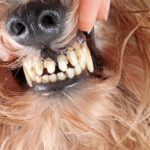An overweight Great Dane is one that weighs more than the recommended weight for its breed and size. This can be caused by a variety of factors, such as overfeeding, lack of exercise, and certain medical conditions.

Being overweight can lead to a number of health problems for a Great Dane, including joint issues, diabetes, and heart disease. To maintain a healthy weight, it is important for Great Dane owners to monitor their dog’s diet and exercise levels, and to consult with a veterinarian if they have any concerns.
Table of Contents
ToggleAverage Weight of Great Dane
The average weight of a Great Dane varies depending on the sex and age of the dog. Adult males typically weigh between 120-200 pounds, while adult females usually weigh between 100-130 pounds.

If a Great Dane’s weight is above average, it usually means the pup is overweight. Though overweight Great Dane may look adorable, being overweight can cause a range of health problems that affect their quality of life and lifespan.
However, it’s important to note that these are just averages, and some Great Danes may be outside of this range. It’s also important to note that the ideal weight for a Great Dane will depend on their body condition and overall health, so it’s best to consult with a veterinarian to determine what an ideal weight would be for an individual dog.
Overweight Great Dane Signs
Lack of a defined waistline
One of the most obvious signs of an overweight great dane is the lack of a visible waist line. This means that when you look at your pet, you should be able to tell that it has a distinct waist located between its chest and hips. If there is no visible curve or indentation, then this means that your dane has excess weight.

Excess weight in Great Danes can cause serious health complications so it’s important for owners to take action if their dane does become obese.
This includes providing them with daily exercise such as walks twice a day; switching their diet to low-calorie foods designed for overweight animals; limiting treats given between meals; and making sure they don’t steal food from other family members. Regular veterinarian visits are also recommended in order to ensure that any weight loss efforts are successful and safe for the pup.
Ribs Don’t appear
Great danes are large, muscular creatures and as such, it can be difficult to tell when they’re overweight. One of the clearest giveaways of an overweight great dane is the lack of visibility of their ribs. A dane that is not overweight should have their ribcage visible from a few feet away; if you cannot feel them, then this indicates that your dane is overweight.
Overall, it’s important to be aware of the signs that your dane may be overweight. Regularly monitoring their weight and body shape can help ensure that they remain healthy and happy for years to come!
Difficulty breathing
When dogs are overweight, they may experience difficulty breathing due to the extra weight putting pressure on their lungs and diaphragm. This can lead to conditions such as obesity-associated bronchitis, which causes inflammation and narrowing of the airways, making it harder for the dog to breathe.
Additionally, an overweight dog may also experience shortness of breath, especially during physical activity or when it gets hot. The extra fat around the chest and neck can also compress the trachea, making it harder for the dog to take in air. These symptoms can also occur in severe cases of obesity and can be a sign of an underlying health condition such as heart disease. It’s important to consult with a veterinarian if you notice any breathing difficulties in your dog.
Reduced energy levels
Being overweight can have a significant impact on a dog’s overall health and well-being. Excess weight places additional strain on a dog’s joints and internal organs, which can lead to various health issues such as arthritis, heart disease, respiratory problems, and diabetes.

Additionally, carrying extra weight can also reduce a dog’s endurance and mobility, making it difficult for them to engage in physical activity and play. This, in turn, can lead to a sedentary lifestyle, which can further contribute to weight gain
Skin fold dermatitis
Overweight great dane may develop rashes or redness in the skin folds due to the rubbing of skin. It’s important to take action if your pet is overweight so as to avoid any long-term health issues. This includes providing them with daily exercise such as walks twice a day, switching your pet’s diet to low-calorie foods designed for overweight animals, limiting treats given between meals and making sure they don’t steal food from other family members. Regular veterinarian visits are also recommended in order to ensure that any weight loss efforts are successful and safe for the pup.
Observe Your Dane’s Behavior
Finally, another way to tell if your dane is overweight is to observe its behavior. If your dane has difficulty in moving around or getting up, an increase in paw-licking or panting, and/or shows signs of being tired more frequently than usual, then this may be an indication that they have gained too much weight. These signs could indicate a number of health concerns, so always consult with your vet to ensure that everything is okay.
Overall, it’s important to keep an eye on the weight of your dane as their large frames can quickly become unhealthy if excess weight is allowed to accumulate. Monitoring for visible fat deposits and watching out for behavioral changes are just two quick ways you can tell if your dane may have become overweight. Following a healthy diet and providing them with daily exercise can help keep your dane in top condition for years to come!
How to get a great dane to lose weight?
There are various ways to assist your overweight dog shed weight. It is important to always consult with your veterinarian before beginning a diet or exercise program.

Most often, danes need to reduce their caloric intake and increase their activity levels in order to reach their desired weight. This means switching to a specially-formulated low-calorie food, limiting treats between meals, and providing regular daily exercise such as walks twice a day. Engaging in interactive activities such as fetch or agility courses is also beneficial for danes looking to stay fit and active.
How many Calories should great dane have?
It is necessary to know the calories a great dane needs in order to keep it healthy and fit. Generally, an adult male great dane should have around 2400 calories per day while female should have around 2000 calories per day.

This amount of calories should be divided into three meals that are spread out evenly throughout the day. This will help your great dane maintain his ideal body weight.
Additionally, it’s important to monitor calories in treats and snacks, since these can add up quickly. Therefore, it is necessary that you know the calories your great dane needs and regulates accordingly to keep its weight in check.
Why Did My Great Dane Gain Weight Suddenly?
There are many possible reasons for why your great dane may have suddenly gained weight. One of the main causes could be due to an increase in calories that your great dane is consuming. If you have recently increased the amount of food being given to your dog or if treats are given too often, calories can add up quickly.
Another possibility could be due to an underlying medical condition, such as hypothyroidism or Cushing’s disease, which can cause weight gain. Lastly, a decrease in exercise and activity levels may also contribute to sudden weight gain in your great dane. Therefore, it is important to pay attention to all of the factors that could be contributing to your great dane’s weight gain.
By being aware of the signs that show your great dane is overweight and understanding how to properly monitor calories, you can help keep your beloved pet healthy and happy for years to come. Knowing these things can also help prevent any potential medical complications that could arise as a result of excess weight. Therefore, it is important to monitor your great dane’s weight regularly and take measures to ensure they do not become overweight.









